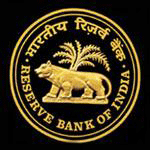The Reserve Bank of India (RBI) has raised the loan-to-value (LTV) ratio for the non-banking finance companies lending money against gold to 75 per cent from 60 per cent earlier, so as to facilitate monetisation of idle gold, according to a notification by RBI. The norms are expected to bolster the loan books growth of the gold loan companies.
The central banks said this is in view of the moderation in the growth of gold loan portfolios of NBFCs in the recent past. RBI had brought the permissible LTV ratio to 60 per cent in March 2012 though it had hinted that it may relax this rule.
Shares of top gold loans companies like PE-backed Muthoot Finance and Manappuram Finance rose around 20 per cent in a flat Mumbai market on Thursday.
The working group led by KUB Rao—an adviser in the central bank’s department of economic and policy research—had made a number of recommendations in September last year, including an increase in the LTV ratio to 75 per cent from existing 60 per cent. The committee was set up by RBI in 2012.
MG George Muthoot, chairman of India’s largest gold company Muthoot Finance, said, “This move by the apex regulatory body will help the cause of financial inclusion and is an acknowledgment of the growing significance of gold-financing NBFCs in fuelling micro-economies in the country. This will help the un-banked rural and semi-urban customers get more value against their assets and prevent them from going back the unorganised sector.”
All gold loans companies were seeking relaxation in the LTV ratio due to de-growth in their loan books.
The RBI has also accepted the working group's recommendation that the making charges in the value of the gold should not be included while calculating the LTV ratio.
“The value of the jewellery for the purpose of determining the maximum permissible loan amount will be only the intrinsic value of the gold content therein and no other cost elements should be added thereto," the notification added. This would restrict the quantum of loan that the lenders can give out to the extent the making charges increases the value of the mortgage.
Moreover, the companies lending money will have to give the borrowers a certificate on the gold purity that will help in determining the maximum permissible loan and the reserve price for auction in case of default.
Besides, RBI has decided to retain its rule that loan disbursement of Rs 1 lakh and above will continue to be done via cheques only, a policy which was opposed by the gold loan firms.
The central bank has retained its rules related to auction of the mortgaged gold in the same district or taluk as against the demand of gold loan firms that it be limited to districts.
RBI has also clarified that original receipt of purchase need not be the sole document for verifying the ownership of the gold being mortgaged and the lenders determine a process for verifying the same. The existing rules require NBFCs to keep a record of verification of ownership of the jewellery where the gold jewellery pledged by a borrower at any one time or cumulatively on loan outstanding is more than 20 grams.
(Edited by Joby Puthuparampil Johnson)





